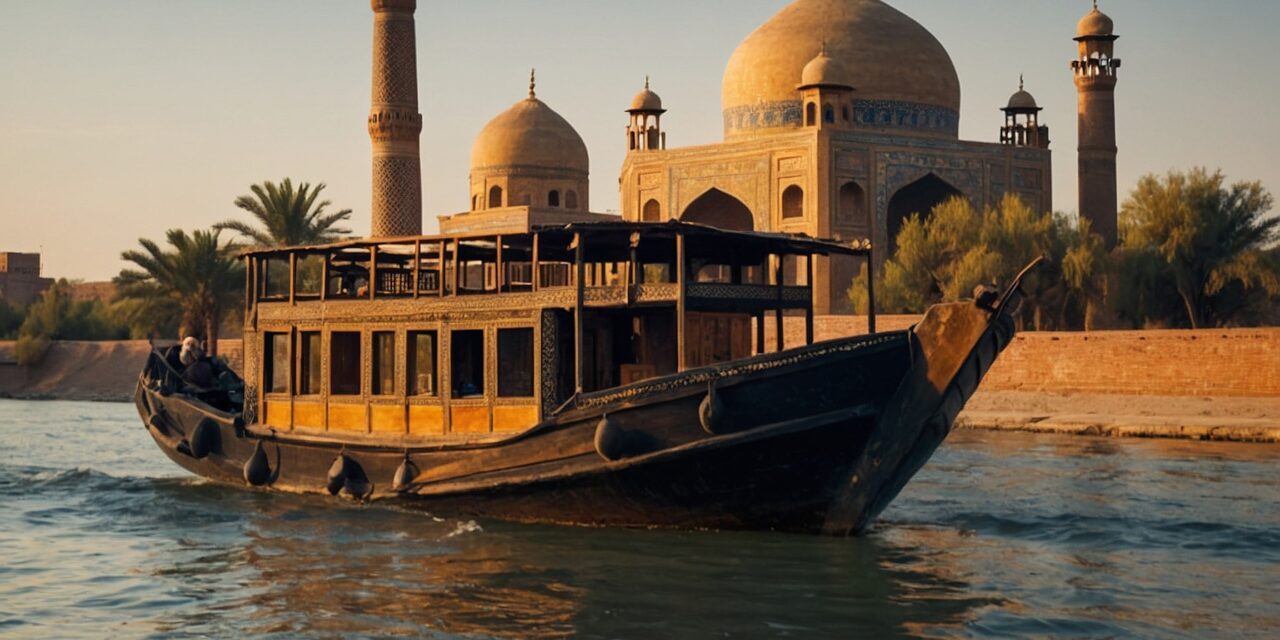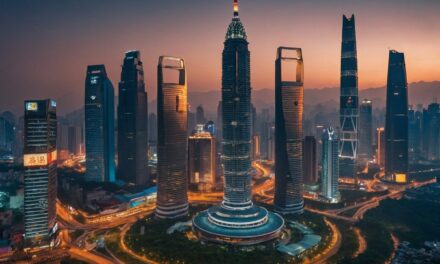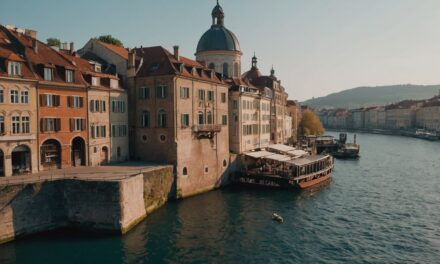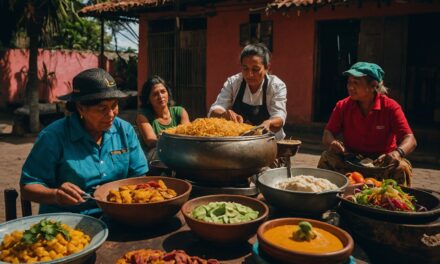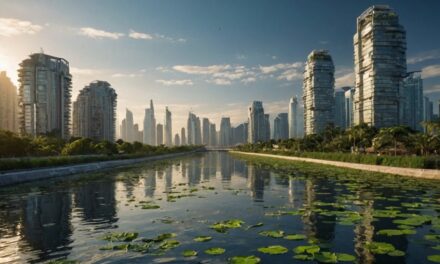The Silk Road holds a significant place in history as one of the most important trade routes that connected civilizations across Asia, Europe, and Africa. Its origins can be traced back to the Han Dynasty in China, around 130 BCE, when Emperor Wu sent Zhang Qian on a mission to establish diplomatic relations with neighboring regions. This mission led to the opening of trade routes that would later become known as the Silk Road.
The Silk Road played a crucial role in facilitating cultural exchange, economic growth, and technological advancements between different civilizations. It was not just a route for the transportation of goods, but also a pathway for the exchange of ideas, religions, and philosophies. The Silk Road connected the East and the West, allowing for the spread of Buddhism, Islam, and Christianity, as well as the transfer of knowledge in fields such as astronomy, medicine, and mathematics.
Key Takeaways
- The Silk Road was a significant trade route connecting Asia and Europe.
- Historical cities along the Silk Road include Kashgar, Samarkand, Bukhara, Khiva, Tashkent, Xi’an, Dunhuang, and Turpan.
- Kashgar is a melting pot of cultures, while Samarkand is considered the jewel of Uzbekistan.
- Bukhara is a city frozen in time, and Khiva is a desert oasis with a rich history.
- The Kashgar bazaar is a vibrant hub of trade and culture, while Tashkent represents the modern face of Uzbekistan.
The route of the Silk Road and its historical cities
The Silk Road spanned over 7,000 miles, crossing through various terrains and landscapes. It started from Chang’an (present-day Xi’an) in China and passed through cities such as Dunhuang, Turpan, Kashgar, Samarkand, Bukhara, and Tashkent before reaching its final destination in Constantinople (now Istanbul). Along this route were numerous historical cities that served as important trading hubs and cultural centers.
One of these cities is Kashgar, located in the westernmost part of China. Kashgar was a melting pot of cultures due to its strategic location at the crossroads of different trade routes. It was a vibrant city where merchants from China, Central Asia, Persia, and India converged to trade goods such as silk, spices, precious stones, and exotic animals. Today, Kashgar still retains its unique blend of cultures with its bustling bazaars, traditional Uyghur architecture, and vibrant festivals.
Kashgar: A melting pot of cultures
Kashgar is a city that truly embodies the spirit of the Silk Road. It is a place where different cultures coexist, creating a rich tapestry of traditions, languages, and customs. The city is home to the Uyghur people, who are predominantly Muslim and have their own distinct language and culture. Walking through the streets of Kashgar, one can hear the sounds of Uyghur music, smell the aroma of traditional Uyghur cuisine, and witness the vibrant colors of Uyghur clothing.
There are several must-see attractions in Kashgar that showcase its unique blend of cultures. The Id Kah Mosque is one of the largest mosques in China and serves as a spiritual center for the Uyghur community. Its grand architecture and intricate decorations are a testament to the city’s rich Islamic heritage. Another notable site is the Abakh Khoja Tomb, which is the resting place of the influential Islamic leader Abakh Khoja and his family. The tomb’s beautiful mausoleum and peaceful gardens provide a serene atmosphere for reflection.
Samarkand: The jewel of Uzbekistan
Moving westward along the Silk Road, we come across Samarkand, a city that has captivated travelers for centuries with its stunning architecture and rich history. Samarkand was once the capital of the powerful Timurid Empire and served as a major center for trade and culture. Its strategic location made it an important stop along the Silk Road, attracting merchants from all over the world.
The Registan Square is undoubtedly the highlight of Samarkand. This magnificent square is surrounded by three grand madrasas (Islamic schools) adorned with intricate tilework and calligraphy. The Registan Square is not only a visual masterpiece but also a symbol of Samarkand’s intellectual and cultural achievements. Another must-visit site is the Shah-i-Zinda complex, a necropolis that houses a collection of mausoleums and tombs. The complex is known for its stunning blue-tiled domes and intricate geometric patterns.
Bukhara: A city frozen in time
Continuing our journey through the historical cities of the Silk Road, we arrive in Bukhara, a city that seems to have been frozen in time. Bukhara is one of the best-preserved cities along the Silk Road, with its ancient buildings and narrow winding streets evoking a sense of nostalgia for a bygone era.
The Ark Fortress is one of the most iconic landmarks in Bukhara. This ancient citadel served as the residence of the emirs of Bukhara and played a crucial role in the city’s defense. Today, visitors can explore the fortress and learn about its fascinating history through its various museums and exhibitions. Another must-see site is the Kalyan Minaret, also known as the Tower of Death. This towering minaret stands as a testament to Bukhara’s Islamic heritage and offers panoramic views of the city.
Khiva: A desert oasis with a rich history
As we venture further west along the Silk Road, we come across Khiva, a city that once thrived as a trading hub in the heart of the Kyzylkum Desert. Khiva’s strategic location made it an important stop for caravans traveling between China and Europe, bringing wealth and prosperity to the city.
The Ichon-Qala fortress is the centerpiece of Khiva and is a UNESCO World Heritage site. This well-preserved fortress is surrounded by high walls and contains numerous historical buildings, including palaces, mosques, and mausoleums. Walking through its narrow streets feels like stepping back in time, with every corner revealing architectural marvels and hidden treasures. Another notable site is the Juma Mosque, famous for its intricately carved wooden pillars and unique Friday prayer hall.
Tashkent: The modern face of Uzbekistan
Our journey along the Silk Road now takes us to Tashkent, the capital city of Uzbekistan. Tashkent is a modern metropolis that showcases the country’s progress and development while still retaining its historical charm.
Tashkent’s modern architecture is a stark contrast to the ancient cities we have visited so far. The city is dotted with skyscrapers, wide boulevards, and well-manicured parks. Independence Square is one of the city’s main attractions, with its grand monuments and fountains symbolizing Uzbekistan’s independence. Another must-visit site is the Chorsu Bazaar, a bustling market where locals gather to buy and sell a wide variety of goods, including fresh produce, spices, textiles, and handicrafts.
Xi’an: The starting point of the Silk Road
Returning to the eastern end of the Silk Road, we arrive in Xi’an, the ancient capital of China and the starting point of this historic trade route. Xi’an holds a special place in history as the gateway between China and the rest of the world.
The Terracotta Warriors are undoubtedly Xi’an’s most famous attraction. Discovered in 1974, this army of life-sized clay soldiers was created to accompany Emperor Qin Shi Huang in the afterlife. The Terracotta Warriors are a testament to the incredible craftsmanship and engineering skills of ancient China. Another notable site is the Great Mosque of Xi’an, one of the oldest and largest mosques in China. Its unique blend of Chinese and Islamic architectural styles makes it a fascinating place to visit.
Dunhuang: A gateway to the Gobi Desert
Moving westward from Xi’an, we reach Dunhuang, a city that served as a gateway to the vast Gobi Desert. Dunhuang’s strategic location made it an important stop along the Silk Road, providing travelers with a place to rest and replenish their supplies before embarking on the treacherous journey through the desert.
The Mogao Caves are the highlight of Dunhuang. These ancient Buddhist caves are adorned with intricate murals and sculptures that depict scenes from Buddhist scriptures. The caves are a testament to the religious and artistic achievements of ancient China and have been recognized as a UNESCO World Heritage site. Another notable attraction is Crescent Lake, a small oasis nestled amidst the sand dunes. Its crescent shape and crystal-clear waters create a surreal and picturesque landscape.
Turpan: The grape capital of China
Our journey along the Silk Road now takes us to Turpan, a city known for its unique climate and fertile soil, making it the perfect place for grape cultivation. Turpan’s grapes have been famous since ancient times and were highly sought after by traders traveling along the Silk Road.
The Jiaohe Ruins are one of Turpan’s most significant historical sites. This ancient city was once an important trading center and served as a military stronghold during turbulent times. Today, visitors can explore the ruins and marvel at its well-preserved structures, including temples, residential areas, and government buildings. Another notable site is the Emin Minaret, an impressive Islamic tower that stands as a symbol of Turpan’s rich cultural heritage.
Kashgar bazaar: A vibrant hub of trade and culture
Returning to Kashgar, we cannot miss mentioning its vibrant bazaar, which has been a hub of trade and culture for centuries. The Kashgar bazaar is one of the largest and most famous markets along the Silk Road, attracting merchants from all over Central Asia.
The bazaar is divided into different sections, each offering a unique shopping experience. The livestock market is a fascinating place to witness the trading of animals, including sheep, cows, and camels. The handicrafts section is a treasure trove of traditional Uyghur crafts, such as carpets, silk fabrics, pottery, and woodwork. Exploring the bazaar is a sensory overload, with the sights, sounds, and smells immersing visitors in the vibrant atmosphere of Silk Road trade.
The Silk Road was not just a trade route; it was a lifeline that connected civilizations and fostered cultural exchange. The historical cities along the Silk Road played a crucial role in this exchange, serving as melting pots of cultures and centers of trade and intellectual growth.
From Kashgar to Xi’an, Samarkand to Bukhara, each city has its own unique charm and historical significance. They are living testaments to the power of human connection and the enduring legacy of the Silk Road. Today, these cities continue to attract travelers from around the world who seek to immerse themselves in the rich history and cultural heritage that the Silk Road has left behind.
As we journey through these cities, we are reminded of the importance of preserving and celebrating our shared history. The Silk Road serves as a reminder that despite our differences, we are all connected by our common humanity. It is through understanding and appreciating our diverse cultures that we can build bridges and forge a path towards a more peaceful and harmonious world.
FAQs
What is the Silk Road?
The Silk Road was a network of trade routes that connected the East and West, stretching from China to the Mediterranean Sea. It was named after the lucrative trade in silk that was carried out along its routes.
What historical cities are included in the journey?
The journey includes visits to several historical cities along the Silk Road, including Xi’an, Dunhuang, Turpan, Kashgar, and Samarkand.
What can I expect to see on the journey?
The journey takes you through some of the most stunning landscapes in China and Central Asia, including the Gobi Desert and the Pamir Mountains. You will also visit ancient cities, temples, and monuments that date back thousands of years.
How long does the journey take?
The journey typically takes around two weeks, although the exact duration may vary depending on the itinerary and travel arrangements.
What is the best time of year to take the journey?
The best time to take the journey is during the spring or autumn, when the weather is mild and the landscapes are at their most beautiful. Summer can be very hot, while winter can be very cold and snowy.
What kind of accommodation is provided?
Accommodation varies depending on the itinerary and travel arrangements, but typically includes a mix of hotels, guesthouses, and traditional yurts or tents.
Is the journey physically demanding?
The journey involves some walking and hiking, as well as long periods of sitting on buses or trains. Participants should be in good health and able to walk for several hours at a time.
What kind of food is provided?
Food varies depending on the itinerary and travel arrangements, but typically includes a mix of local cuisine and international dishes. Vegetarian and other dietary requirements can be accommodated with advance notice.

